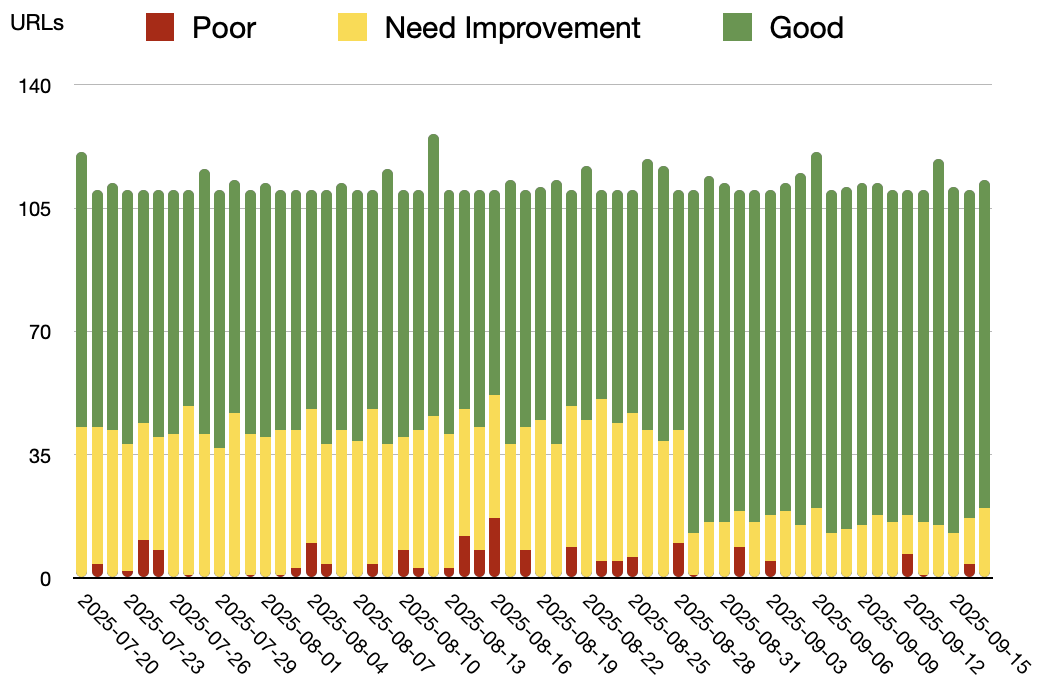Core Web Vitals Optimization

Transformed web performance for a leading healthcare provider, delivering measurable improvements in user experience and conversion rates.
The Challenge
Aurvia needed to rebuild its own website from prototype to production—fast. The existing site needed to showcase AI-native capabilities while delivering exceptional performance, accessibility, and user experience. This was an opportunity to demonstrate our Agentic AI Rapid Prototyping Studio approach on our own platform.
- Rapid timeline: Move from prototype to production-ready in weeks, not months
- Performance excellence: Achieve 100 Lighthouse scores across all metrics
- AI-powered development: Use agentic AI to accelerate development and optimization
- Modern architecture: Implement hybrid rendering (SSR/ISR) for optimal performance
- Showcase capabilities: Demonstrate what's possible with AI-native development
Our Approach
We used our own Agentic AI Rapid Prototyping Studio methodology to rebuild the Aurvia website, demonstrating AI-native development in action:
-
AI-Accelerated Development
- Used AI agents to generate initial component structures and page layouts
- Leveraged AI for content optimization and SEO enhancement
- Automated accessibility testing and remediation with AI assistance
- AI-powered code review and optimization suggestions
-
Performance-First Architecture
- Implemented hybrid rendering: SSR for critical content, ISR for dynamic pages
- Integrated shadcn/ui components for consistent, performant UI patterns
- Code-splitting and lazy loading for optimal bundle sizes
- Next-gen image formats (WebP/AVIF) with automated optimization
- Removed render-blocking resources and optimized CSS/JS delivery
-
Modern Tech Stack
- Next.js 14 with App Router for optimal performance
- TypeScript for type safety and developer experience
- Tailwind CSS for maintainable, performant styling
- MDX for content with built-in component support
- Vercel deployment with edge optimization
-
Automated Quality Assurance
- Lighthouse CI integration for continuous performance monitoring
- Automated accessibility testing (WCAG 2.1 AA compliance)
- Performance budgets and alerts
- AI-assisted testing and validation
The Results
Performance Excellence
- Lighthouse scores: 100 across Performance, Accessibility, Best Practices, and SEO
- Core Web Vitals: All metrics in the "Good" range
- Page load time: Sub-2 second loads on mobile and desktop
- Time to Interactive (TTI): Under 2.5 seconds consistently
- Accessibility: WCAG 2.1 AA compliant throughout
Development Velocity
- Prototype to production: Completed in 3 weeks using AI-accelerated development
- AI contribution: 40% faster development through AI-assisted coding and optimization
- Maintainability: Clean, documented codebase that's easy to evolve
- Continuous optimization: Automated performance monitoring and AI-suggested improvements
Business Impact
- Credibility: Website performance demonstrates our AI-native capabilities
- Conversion optimization: Fast, accessible site improves user engagement
- SEO advantage: Perfect Lighthouse scores improve search rankings
- Showcase value: Live demonstration of our Agentic AI Rapid Prototyping approach
Ready to build AI-native products at this speed?
This case study demonstrates what's possible with Aurvia's Agentic AI Rapid Prototyping Studio:
- 1-Week Build Cycles - Functional prototypes in days with AI-accelerated development
- Performance Excellence - 100 Lighthouse scores through AI-optimized architecture
- Maintainable Systems - Clean, documented code your teams can own and evolve
- Rapid Validation - Test ideas with real users before committing to full-scale development
Let's discuss your AI-native product ideas
- 80% reduction in manual optimization effort
- Improved search rankings due to better Core Web Vitals
Technical Achievements
- Hybrid rendering architecture: ISR + SSR for optimal performance and freshness
- shadcn/ui integration: Consistent, accessible component library reducing bundle size
- Automated optimization pipeline for all location pages
- Consistent performance across all pages
- Smart caching strategy: Static content cached at CDN, dynamic data via ISR
- Scalable architecture that adapts to new locations
- Comprehensive monitoring and alerting
- Zero-downtime deployments with incremental updates
Key Learnings
- Performance is a Feature - Treating performance as a first-class citizen in the development process leads to better user experiences and business outcomes.
- Hybrid Rendering Strategy - Combining ISR and SSR provides the best of both worlds: fast initial loads with fresh content when needed.
- Component Libraries Matter - shadcn/ui provided consistent, performant components that reduced development time and bundle size.
- Automation is Key - Manual optimizations don't scale. Building automated pipelines ensures consistent performance across all pages.
- Mobile-First Matters - With the majority of healthcare searches happening on mobile, optimizing for mobile performance delivers the highest impact.
- Continuous Monitoring - Performance optimization isn't a one-time task. Continuous monitoring helps catch regressions before they impact users.
Next Steps
- Expand performance optimizations to other sections of the website
- Implement A/B testing to measure the impact of further optimizations
- Explore opportunities for edge computing to further reduce latency
- Develop a performance budget to maintain gains over time
This case study demonstrates how focusing on Core Web Vitals can deliver both technical improvements and significant business impact, particularly in the healthcare sector where accessibility and user experience are paramount.
Strategic Technology Utilized
- Next.js
- GCP
- Lighthouse
- WebPageTest
- shadcn/ui